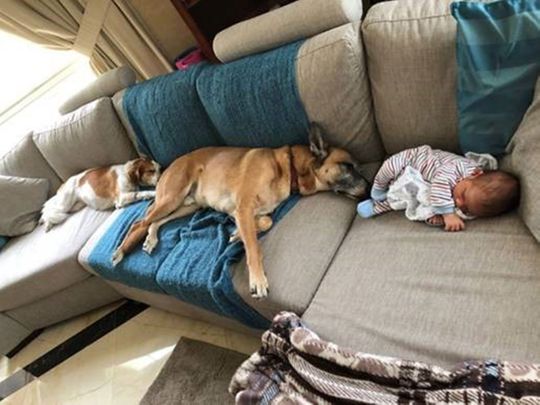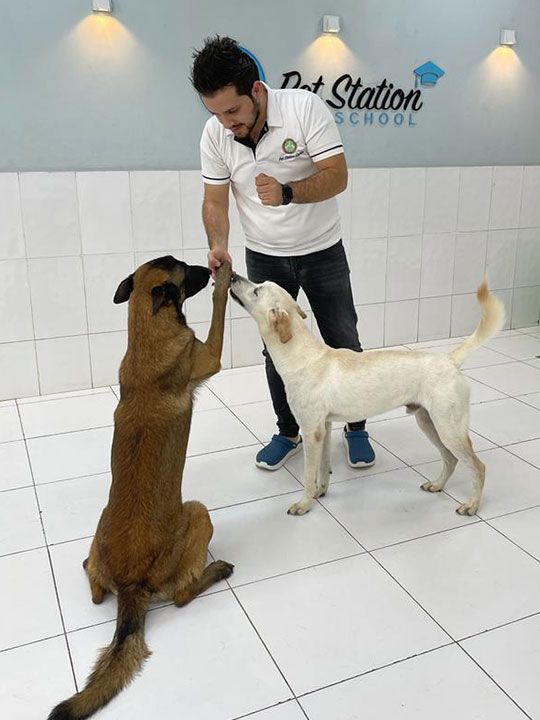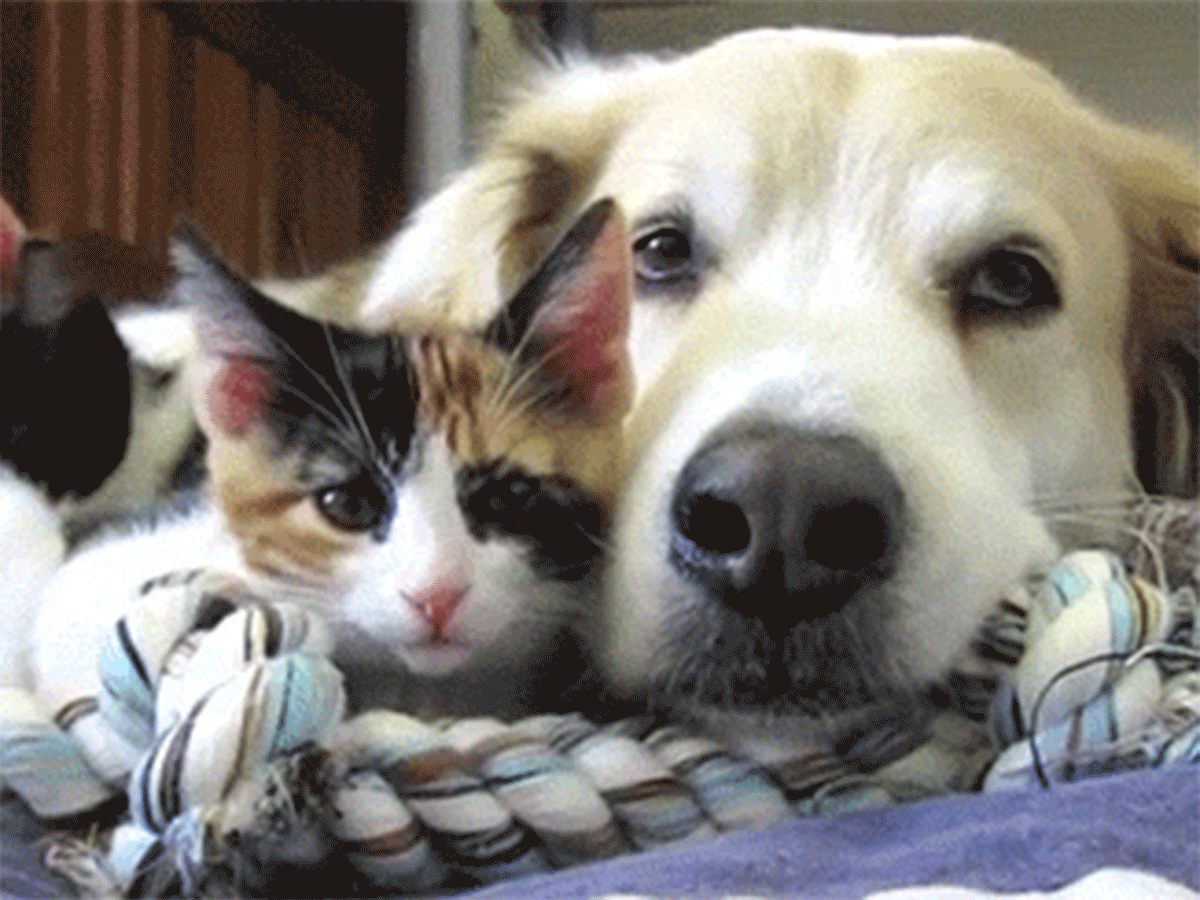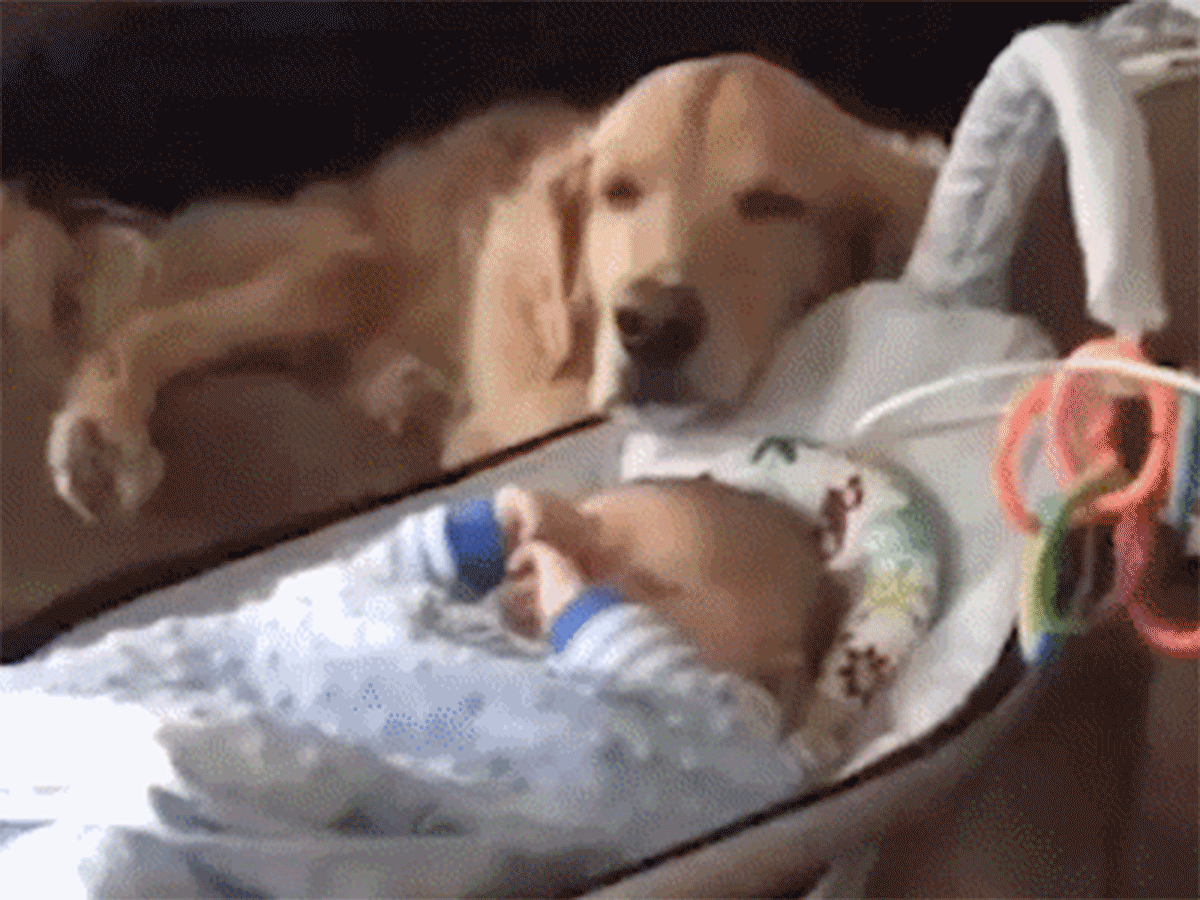
When British expat Rebecca Jessop learnt she was pregnant, she began to carry a doll around the house.
Before this story takes on a horror-movie edge, it wasn’t some creepy display of maternal instinct – it was a tool to get her fur babies on board with the idea that they’d need to share her. Jessop had two dogs and two cats at the time.
Christos Savvidis, Dog Trainer at Dogwalk, explains that having a newborn baby and a family dog is somewhat uncharted territory for most first-time parents. “Thinking about how to properly introduce the two can be tricky but you need to remember that your dog is also part of the family. Some dogs can find babies a bit overwhelming as their sense of hearing and smell is heightened in comparison to us humans,” he says.
It was this element of uncertainty that Jessop was also concerned with. “We first found out we were going to have a baby in December 2017,” she recalls. “Our main concern was one of our dogs: Lexi. She can be quite reactive to sounds and sudden movements so I immediately started researching the best ways to prepare her for all these new sounds and smells as well as some other adjustments like shorter walks and less attention for a while. But always maintaining positive reinforcement so that all the pets associated the new baby with good things.”
With the cats – who seem a bit more aloof – the issue was not of having an infant around, it was that they thought all the cots and bassinets were meant for them, she laughs.

“I got some fantastic advice from a few of the positive reinforcement/force free trainers around the city as well as doing my own research online and by speaking to people who had already gone through something similar,” says Jessop, who is the admin manager at Dubai-based pet care service provider Paw Pals.
And so the doll was brought in.
“We borrowed a doll from my nieces so I could practice carrying it around and teach the dogs not to jump on me or be boisterous when carrying the baby. I also played baby crying sounds from YouTube to teach them not to bark when they heard the baby. I taught them to walk on leash next to the pram so I would still be able to walk them. We made changes in the house early on but gradually,” she tells Gulf News in an interview.
“The best thing we invested in were baby gates; in an open plan house they were essential for keeping the children contained and the animals safe.”
Bringing the baby home
When Jessop had given birth to her son, they returned to a companionable four. “When we finally brought our new little boy home the animals were fantastic, they had a good sniff and watched from a distance, didn’t jump on me or him. It was as if they knew he was small and helpless. Within hours/days it was as if he’d always been there, the cats would snuggle up on my lap next to him while he was still too little to grab at them. What’s fantastic is that the baby becomes accustomed to the sounds of the dogs barking/cats meowing while in the womb so none of those noises bothered him.”
Savvidis says: “A lot of pet parents are convinced that their dog knows the difference between babies and adults, and most will say that their dog is gentler and calmer when around the baby. This could be something to do with scent, but there are no evidence-based studies – so we cannot say this for sure.” Anecdotal evidence however supports Jessop’s findings.

Are some dogs better suited for family?
Predisposition-wise perhaps, say experts. But it all boils down to an animal’s life experiences and temperament. Dog trainer Mohammad Ghannaj of Pet Station Group, explains that some dogs do have a reputation for being friendlier with kids, but where rescue dogs such as Jessop’s are concerned it really is a question of character. “That’s based on history – some dogs who have been abused when they were small… we have seen rescue dogs who are friendlier than the Labrador or golden retriever and we have rescue dogs that are aggressive, they are always coming for behavioural training– it depends,” he explains.

Veterinary Nurse Laurel Osgood, at Al Barsha Veterinary Clinic, echoes the sentiment, saying: “All children should be closely supervised when interacting with the family pet(s) until they are old enough to interact with them appropriately. However, every animal is different, and child-friendliness often depends as much, if not more, on the temperament and training of the specific animal as it does on the species. All children should be taught how to appropriately interact with pets, and learn to respect the pet's boundaries and understand when the pet is communicating that it does not like what the child is doing,”
Either way, introductions, says Ghannaj, must be made slowly and over time – don’t expect an instant Instagram reel-perfect meet. “Every day [we should have them meet for] 15-20 minutes, after that we’ll increase it daily.” These hang-outs must be supervised at all times.

Dogs versus cats
Felines tend to be independent bordering on aloof whereas dogs are known to crave – and demand – attention. “Cats can be very child friendly, particularly those with easy-going temperaments,” explains Osgood. Getting dogs accustomed to the young-ones then requires a little more effort – as Jessop knew. “I did a lot of enrichment activities for all of them as I knew that my attention would be elsewhere a lot of the time. Cats are very good at entertaining themselves and my cats are quite old now so don’t have too much energy to expend. We built them a cat wall and a catio. The dogs needed a bit more attention but I think they enjoyed me being home all the time and when the weather was better we did long walks again but with the pram.”
When Jessop had her second baby, the whole family was ready. “I think they all just thought, ‘here we go again’, and us not being first-time parents meant we were much more relaxed,” she says.
Quick tips to get the dogs used to a new family member

Christos Savvidis, Dog Trainer at Dogwalk, offers tips on helping kids and dogs get along.
Early socialisation: If you are in a position to be able to socialise your dog with other younger children (even three- to six-years-old) before the arrival of your baby, this is a great starting point. Getting your dog comfortable around small children before the new baby arrives will be beneficial.
Getting used to the smells: The next steps to a successful introduction of your new baby and your dog again lie in the training of your dog that happens beforehand. If you have a puppy, then they will be generally more excitable, so you need to ensure that you have some basic focus-based training underway so that you can ask your puppy to sit and be calm on first introduction. They key is controlled, slow, supervised meetings with your baby and puppy. More often than not, your puppy will just want to watch and be around your baby. Allowing the dog to sniff and smell your baby is fine, this is how they will familiarise themselves with the new addition to the family.
Don’t ignore them: With adult dogs we do find that they have some understanding of the difference between baby and adult, as mentioned. But both puppies and adult dogs need to have sufficient attention during family time, so that they are not ignored when around the new baby. Always involve your dog and provide them with plenty of positive interactions whilst the baby is around – this way they will not feel ignored or left out. You can also provide other positive reinforcers such as treats, and reward for calm behaviour when your dog is around the baby.
Supervision is essential: Never leave young children and dogs unsupervised together. Try to provide your dog with their own safe space to retreat to, such as a room or a crated area that they can get some peace and quiet in should they choose to do so.
Mutual respect: As your children grow up, you need to ensure that they interact with all dogs in a caring and gentle manner. They will learn from you, so show them the correct way to pet and handle your dog from an early age. If in doubt, seek the advice of a professional trainer who will be able to assist you with setting up your home and pup for your new arrival.
Have a topic you'd like us to cover? Write to us at parenting@gulfnews.com




